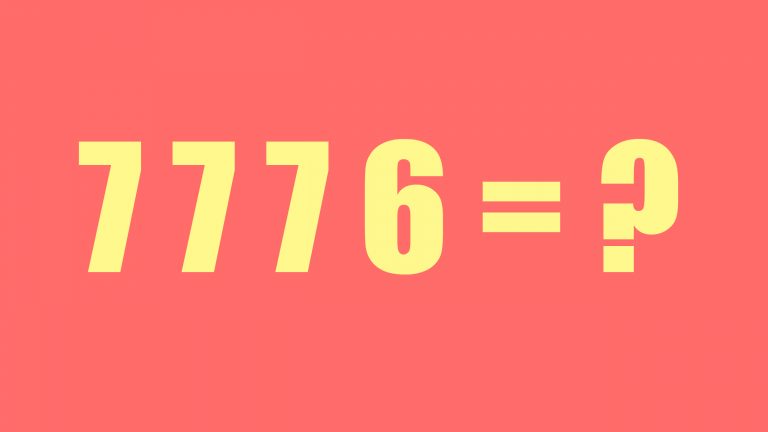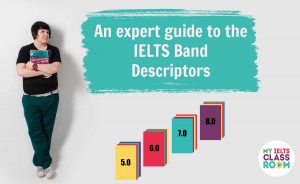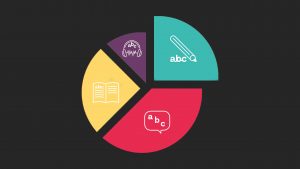
How is your overall IELTS writing band score calculated?
Hey! Today I want to give you a short guide to how your overall IELTS writing band score is calculated. You might think that this is obvious, but you will be surprised how many people misunderstand the scoring system and, therefore, think that they are performing better than they are!
3 Questions about calculating your IELTS Writing Score 💯
1. Who marks your IELTS writing paper?
In your writing exam, you will write on two separate answer sheets – one for Task 1 and one for Task 2. Actually, there is a good reason for this – your questions will be marked by TWO different examiners! Yes! TWO IELTS examiners will have the pleasure of marking your writing!
Why? Well, this increases the validity of the exam. If two examiners mark your work, there is a higher chance that the score your receive will be fair and unbiased (and there is less chance of cheating!) The examiners will never see your other score or discuss your grades with each other – everything is done independently.
In fact, if there is a BIG DIFFERENCE between your Task 1 and Task 2 scores, then your tasks will be marked by a THIRD and FORTH examiner at the test centre to make sure that everything is correct.
IELTS takes the accuracy of your score very seriously.
Want to know how the examiner will apply the band descriptors when marking your IELTS essay?
Then download a copy of our FREE e-book, which explains how each of the four marking criteria is applied and includes the most common errors made by test-takers. Just click here for your copy.

2. How is your score for IELTS Task 1 & Task 2 calculated?
IELTS examiners are trained to give you band scores in four areas – I hope that you already know what they are, but if you don’t click here to watch my free video lesson that briefly explains them.
It is essential that you understand how your paper will be banded before you sit the test – other wise you are essentially sitting the test “blind”. Just in case you don’t know what the four areas yet, they are
- Task Response / Achievement
- Coherence and Cohesion,
- Lexical Resource (which is a fancy word for vocabulary)
- Grammatical Range and Accuracy.
You will receive a score from 0 – 9 in each area and then these scores will be combined to create your final score for Task 1 or Task 2. And this is where things become interesting. Most test-takers (and teachers) assume that IELTS follows the normal mathematical rules of rounding up i.e. if a student has a score of 6.75, then they will be awarded a 7.0. However, thanks to new privacy rules, we know that
IELTS scores are rounded down not up
Many students who join my school are confused why they got 6.5 in their test when they “had constantly been getting 7.0 in their practice tests“. Well, there can be many reasons for this fall in performance, but one is often that teachers wrongly think that 7776 equals 7.0. It does not. It equals 6.5.
To achieve an IELTS band score of 7.0 for Task 1 or Task 2, you need an average score of 7.0! Not 6.75 – 7.0! Let me make this clear for you by showing you a range of scores for TR/CC/LR/GRA and the final score they would receive.
How to calculate your IELTS score
Let’s look at some sample scores to make it 100% clear how the band descriptors are applied and used to calculate your final score:
6666 = 6.0
7666 = 6.0
7766= 6.5
7776 = 6.5
7777 = 7.0
8777 = 7.0
8877 = 7.5
8887 = 7.5
8888 = 8.0
Do you see? If your average is less than 7.0, you will receive a 6.5 for that part of the test. This is true even of more complicated scores. Let’s look at the profile of a student with a more staggered score sheet (which unfortunately is quite common):
5688 = 27
Average = 6.75
Overall IELTS writing band score = 6.5
So, please are this in mind when you are training – if you want to achieve a 7.0, you need an average of 7.0 overall!
Listen to our interview with an IDP administrator to find out more about what happens behind the scenes in an official test centre:
3. How are the Task 1 and Task 2 scores combined?
Now, this is where things get really interesting. When your Task 1 and Task 2 papers leave the two examiners’ hands, they will each have scores for the individual parts of the test. However, how are the 2 individual scores for Task 1 and Task 1 then combined to create your overall IELTS writing band score? The answer is……….
NOBODY KNOWS!!
Well, I am sure somebody at Cambridge Headquarters knows but, seriously, nobody at your test centre knows the exact formula because it is calculated by a computer! 🖥️ Here’s what we do know:
Task 2 is worth twice as much as Task 1 .
That’s right, you score for your essay comprised two-thirds of your final score, and the score for your letter/report the remaining third. However, what nobody knows is HOW IELTS ROUNDS THE SCORES!
As we have already seen, they round DOWN for the individual scores, so we cannot presume the they round UP for the overall IELTS writing band score! Also, because there are TWO scores, the calculations are more complicated. For example, let’s look at these two students:
Student 1: Task 2 = 7.0 / Task 1 = 6.5 = 7.0 x 2 + 6.5 = 20.5 ÷ 3 = 6.833
Student 2: Task 2 = 7.0 / Task 1 = 6.0 = = 7.0 x 2 + 6.0 = 20 ÷ 3 = 6.66
Do they both get rounded up to 7.0? Do neither of them get rounded up to 7.0? Or, does only one of them get rounded up? What is their overall writing IELTS band score?
NOBODY KNOWS!! 🖥️
Also, if you have read my other blog posts, you know that I work as an exam creator. This means that I know a lot about exam validity – creating tests that are standardised and have a small standard of errors is VERY COMPLICATED. Seriously!
For example, when we construct our reading and listening tests at the university, we have to use a system called The Cito variation on the Bookmark Method to be sure that every single question in a test is valid. That means using this formula:

where Xi is the symbol for the response to the item (i) (taking the value 1 for a correct and 0 for an incorrect answer); θ is the value of the latent variable; ai(>0) is the discrimination parameter of item I; βi – its difficulty parameter.
Why am I telling you this? Is it to show off my maths? No! I struggle to understand this myself. My point is that IELTS is definitely NOT just taking your essay score, doubling it, adding it to your Task 1 and dividing by 3!!!!!!! Whatever is happening is locked inside a computer algorithm which
NOBODY KNOWS!! 🖥️
Did you know that it is now possible to ask for a breakdown of your writing and speaking scores if you sat your test at a British Council test centre? Find out how to apply and use our copy and paste email template by clicking here

Final thoughts
So, what does this all mean? Well, it means that nobody really knows how your overall IELTS writing band score is calculated! So, the only way you can be sure to get about a 7.0 in your test is to make sure that you score a 7.0 in Task 2 AND Task 1.
My advice? Treat both parts of the exam with equal respect! Yes, the essay is worth double the points so you have to ensure you can score about 7.0 here, but don’t neglect your Task 1 to such an extent that your future is left in the hands of a computer algorithm!!! 🖥️
